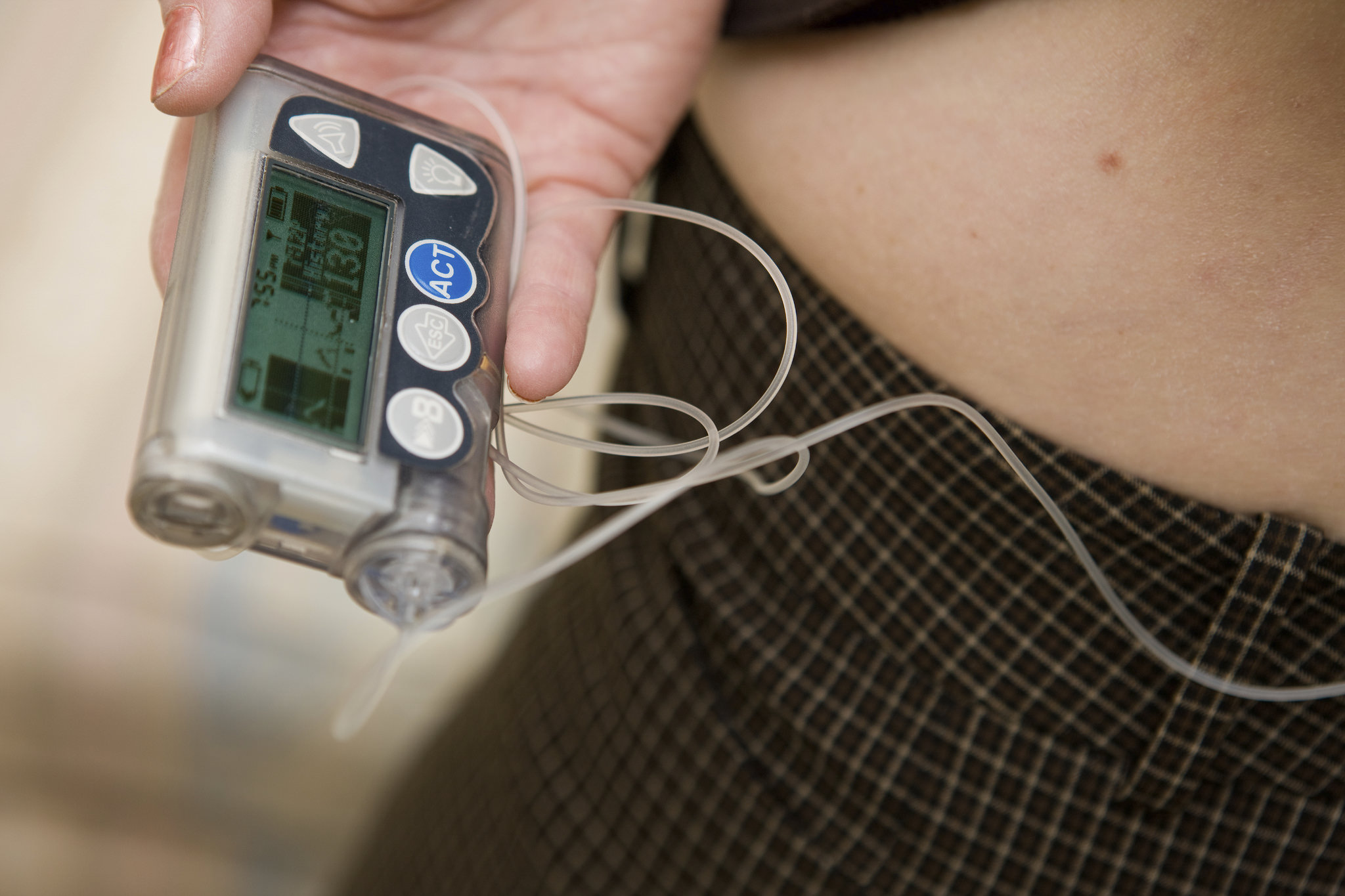Insulin Pump (Photo courtesy of the Minnesota Department of Employment & Economic Development)
I put my head together with the Insulin Pump & CGM Therapy Team, George and Autumn, to help you understand the signs that it might be a good time to start using an insulin pump, the benefits of insulin pump therapy, and how to get started.
4 Signals That Adding a Pump to Your Diabetes Treatment Plan May Be Helpful:
- You’re tired of multiple daily injections
- Your blood glucose levels are fluctuating
- You’re experiencing insulin resistance due to frequent injections
- You desire better control of your diabetes
5 Benefits of Using an Insulin Pump:
- Fewer insulin injections
- More predictable and precise insulin delivery
- Fewer high and low spikes in blood sugar
- Only one type of insulin necessary
- Overall improvement in quality of life and a more flexible lifetstyle
Getting Started:
You can contact our Insulin Pump Therapy Team to find out more at 866.779.8512, Option 2 (phone) and 248.577.9903 (text). They will help you navigate the process of obtaining an insulin pump and answer your questions. For example, depending on your insurance type, authorization may be required, and some documentation may be needed, including a prescription, clinical notes from recent office visits, blood glucose logs, lab work, and proof of diabetes education. (Depending on your insurance plan, the process can take several weeks to complete.) We will also recommend that you have a conversation with your physician to discuss insulin pump therapy and which pump is best for you.
On our Insulin Pump Therapy webpage, you can learn more about the three major pumps that we carry from OmniPod, Tandem, and Medtronic, as well as insurance coverage and life with an insulin pump.




